This documentation is for our current platform, hosted at bluebite.com. If you are still using the mtag.io Object Manager or Studio to manage your Blue Bite account, please see our Legacy Documentation.
Objects
Objects are unique digital ID's stored in the Object Manager that represent either serialized (a single) or non-serialized (multiple) physical things in the world. Each Object in the Object Manager is assigned its own universally unique identifier (UUID) and will ultimately house all the attributes, identifiers and digital experiences assigned to the physical thing.
Object List
The Object List view off the main navigation is a master view of all objects connected to the organization (these can be either assigned or unassigned to a Project). The list view provides a means for users to search for individual objects, filter the list for segments of objects, and view their object data in a table format. Users can also access project-specific object list views by navigating to a list via a project detail view. In this case, users will see listed objects only assigned to that specific project.
Search
The Object List view can be filtered based on searches when a user looks for an object by its UUID or other identifier on the object (e.g., UID, GTIN, etc). Object search will dynamically filter the list view as the user types, continuing to narrow the results to provide the user a best guess on which object they are looking for.
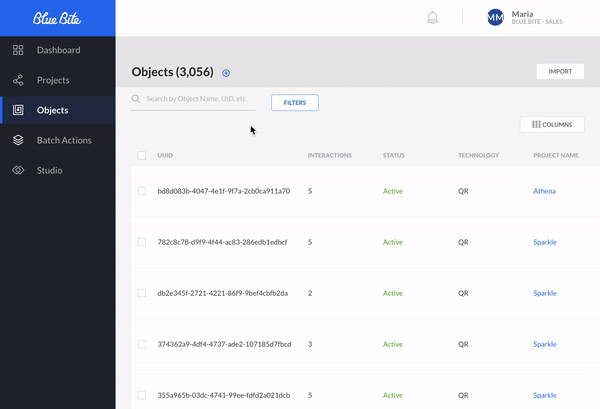
Filtering
Users can also further narrow the list view by applying faceted filters. One or more system data (status, project, technology, etc), custom attribute data, or variable data can be applied as a filter to the list. Users will define both the attribute label and specific value they want to apply as a filter. As filters are applied they will appear as labels above the list view so it is clearly visible how the current list has been filtered.

Column Configuration
The columns available in the Object List table can be customized for each object manager to best fit the needs they have for the specific programs they may be running. By selecting the columns control, users can view all the fields available to set as a column, which columns are actively set for their table, easily search for specific fields they may want to apply as a column, and have an easy way to reset to the default table setting if needed. Selecting fields from the list will add the field to the selected column view; once submitted all selected column fields will be added to the table. Users are able to rearrange the order of the fields added by simply dragging and dropping the fields to their preferred order.
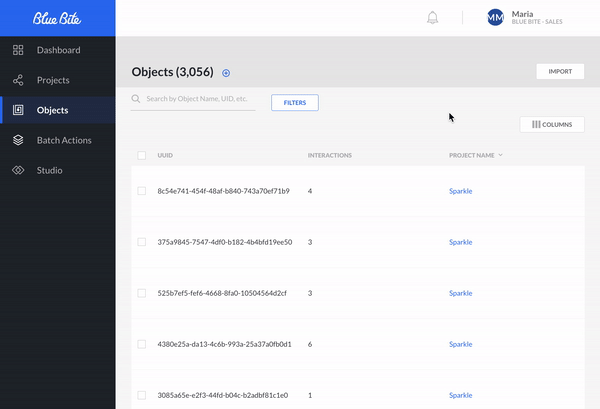
Any settings made by an individual object manager will only apply to their user account and will be persisted so should they navigate away from the list view or log out, the next time they return to that view there settings will still be active.
Additional Object Actions
Batch Edit
Objects can be updated in bulk through the object manager interface via the action bar after selecting one or more objects from the list. Here users can manage general information, assign technology types, and define custom attributes across selected objects (either adding new, updating, or removing information). When batch editing, the number of objects selected is shown as well as the number of objects with the current information assigned. This gives users immediate context as they go about defining new attributes to their objects.
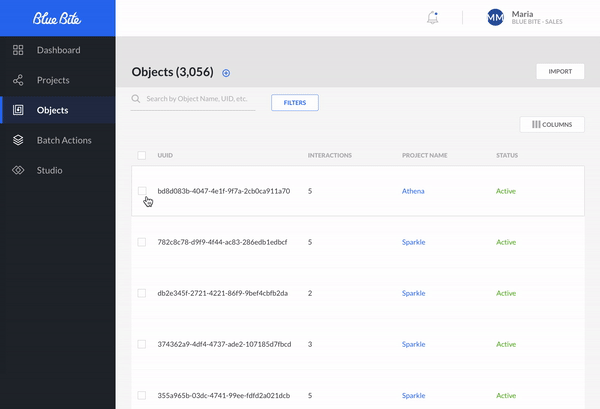
Exporting
Objects and all of their related attribute data can be exported from the system by making a selection and taking the export action off the action bar. A CSV file will be generated which includes all of the objects and their related data (system, touchpoint, attribute info) across all pages. Once the the file has been created by the system, a download link is made available from the notification tray.

Deleting
Removing objects from the manager can also be handled from the list view. Selecting one or more objects in the list and selecting "Delete" from the action bar will prompt users with a confirmation before finally deleting an object.
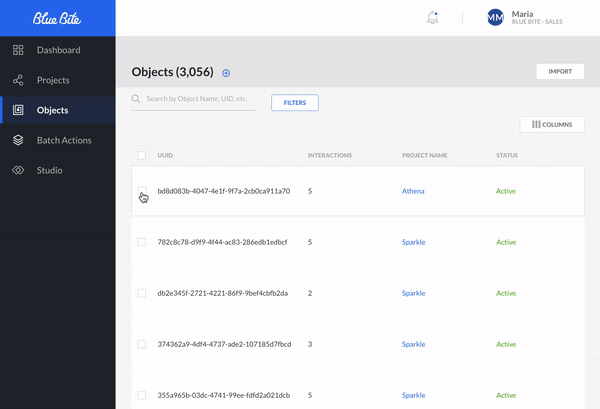
Note: Once an object is removed from the system it cannot be retrieved and all of the related data and identifiers are deleted. After this point objects will be removed from any projects they were assigned to and will render a "whoops" page if a consumer taps or scans the objects touchpoint URL (unless that touchpoint URL is reassigned to a new object - see "adding a touchpoint")
Object Details
The object detail view is your gateway to all information available on a specific individual object within the system. Depending on how you've configured your objects, this may represent a single physical product in the world or an entire product category. Objects can be accessed off the main object list view or through any individual project object list view.
Important Meta data
There are specifically three types of important data which can be found within this view. System Data contains information such as primary identifiers (UUID of an object), secondary identifiers (e.g., UID, GTIN, EIN, etc), an objects project assignments (what project is it associated to), Technology (does this have a QR, NFC, and GS1 touchpoint protocol assigned), last updated at. Attributes contains all of the custom attribute labels and values available on that object. Variables contains all of the object variable labels and values available on that object.
Previewing
If an object is assigned to an experience, you're able to view varying states of that objects experience (depending on the type of touchpoint protocol assigned) in context to custom attribute and object variable data that is available from the object. This means unlike in the studio, you can see object specific dynamic content be displayed and can toggle across authentication or tamper states (if applicable). You may also preview the experience on desktop or from a mobile device via a temporary QR code. Different protocol touchpoint assignments make different preview states available for configuration.
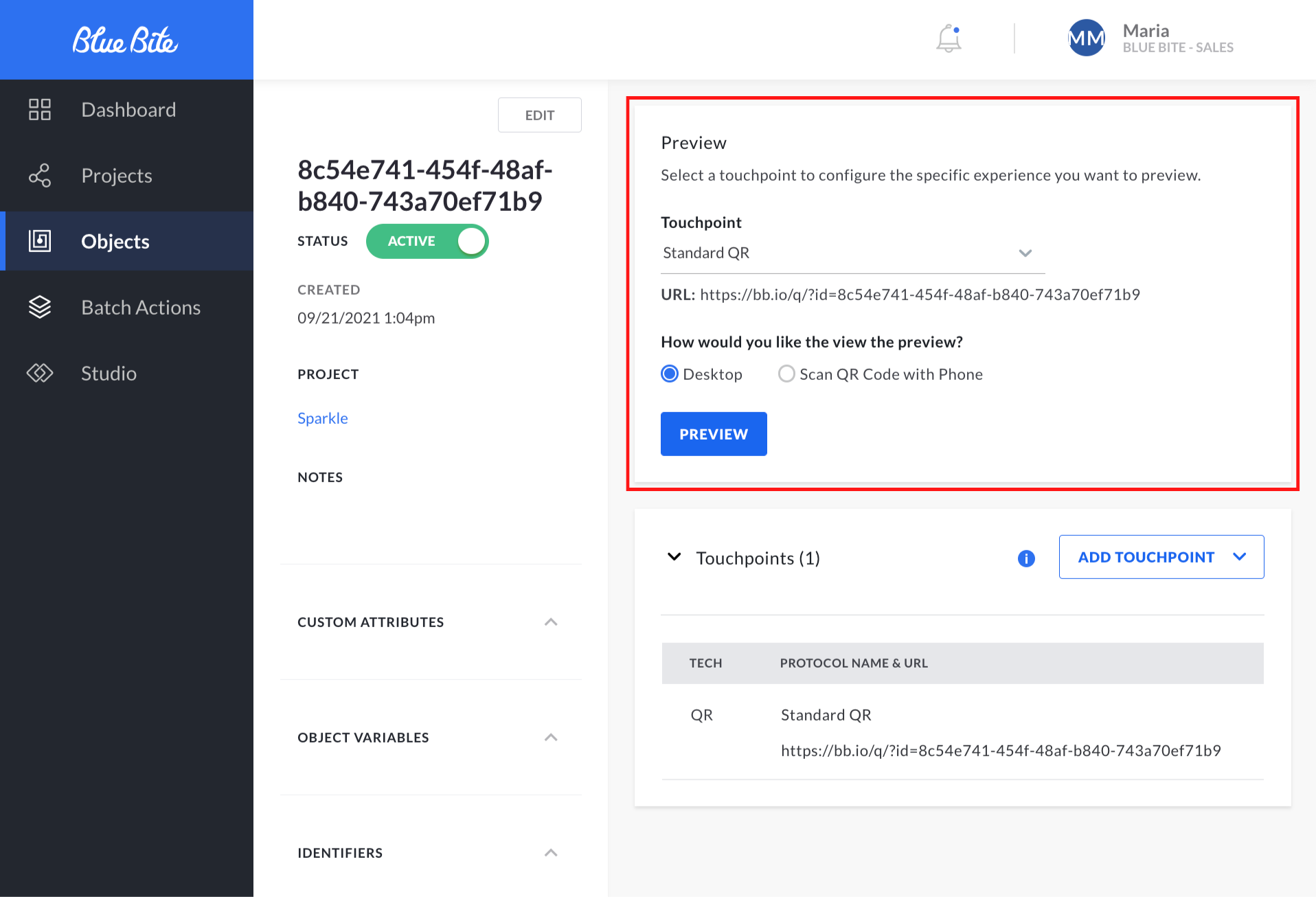
Experience Assignments
If an object is assigned to a project with experiences added to it, that object will automatically be assigned those experiences. From the detail view you can see all available experiences to the object.
Note: You may only manage experience assignments from the parent project detail view; you cannot change them from the object directly.
Custom Attributes
Custom attributes are unique data points at are defined by brands as specific characteristics of the physical thing the object represents. Only the brand may define or change these values. They can be used within the Object Manager for object discovery (in search, filtering and sorting), in custom reporting, and as either dynamic content for display or logic for Studio Experiences connected to the Object. Any user with access to the object's organization has access to update the custom attributes of the object. There is no limit on the number of custom attributes an object manager can define for an object.
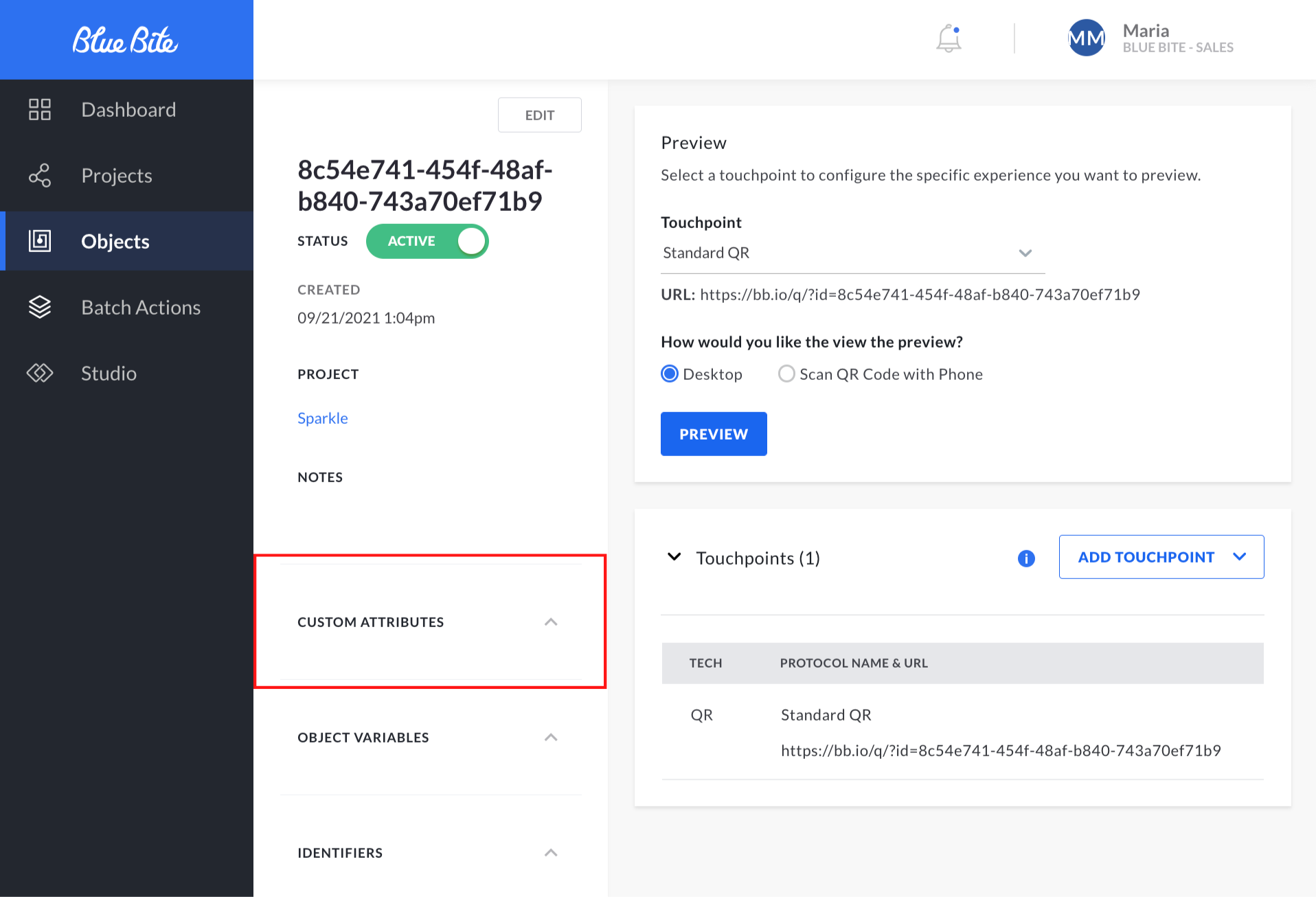
Adding an experience to a project collection sets that experience as a the destination for objects within the collection upon interaction. Studio experiences and custom URL redirects are two available options to set by an object manager. Only the studio experiences built in your organizations studio account will be available for selection, even if the user has access to multiple organizations.

